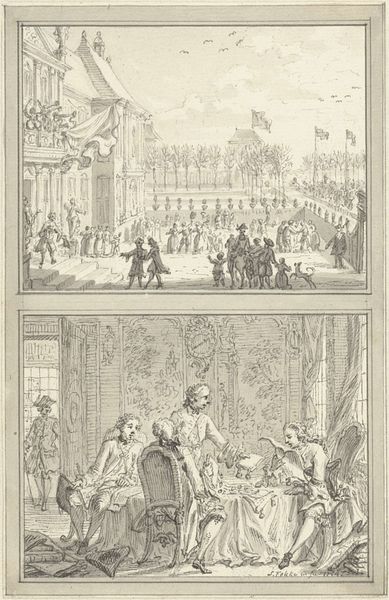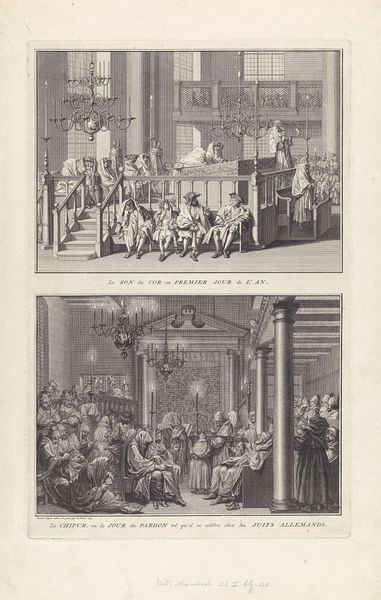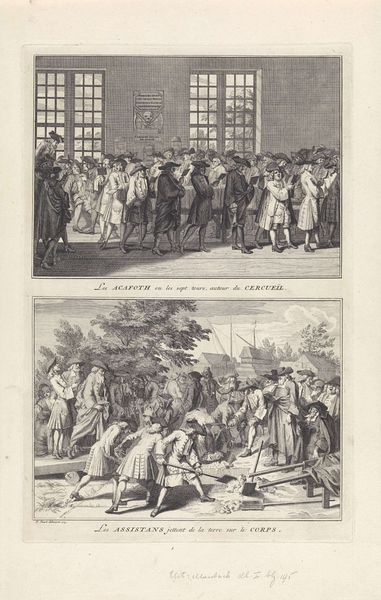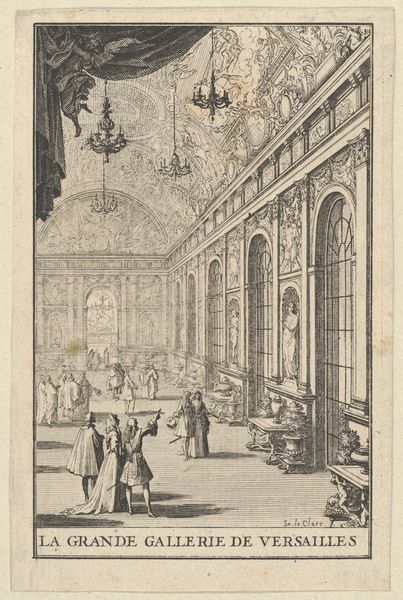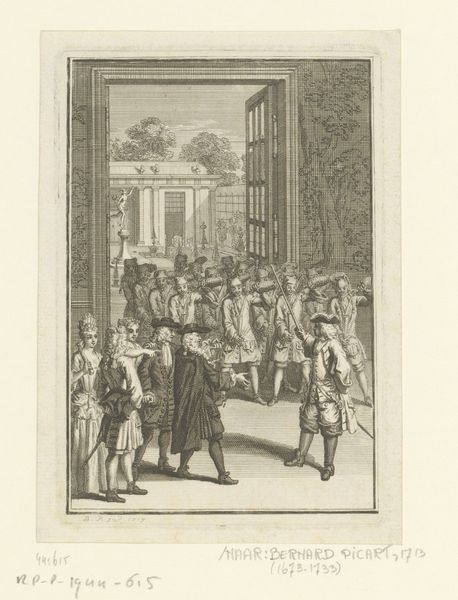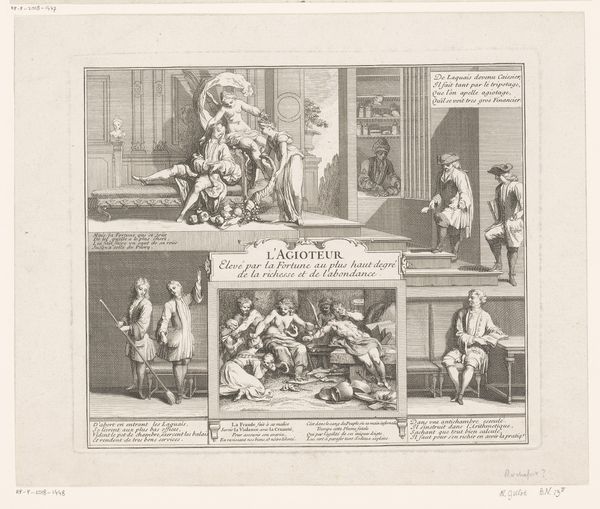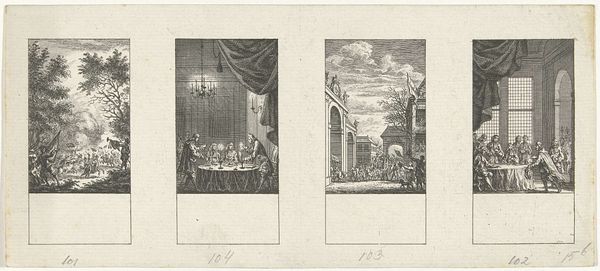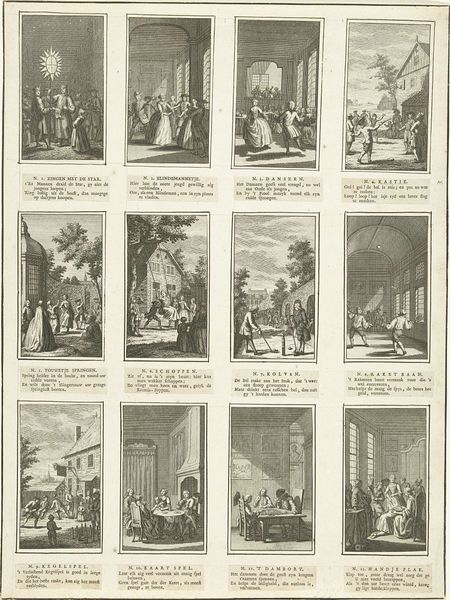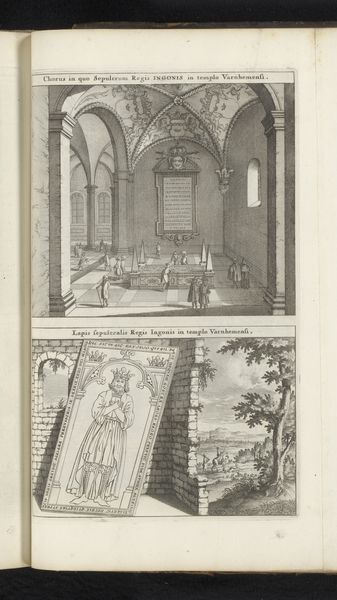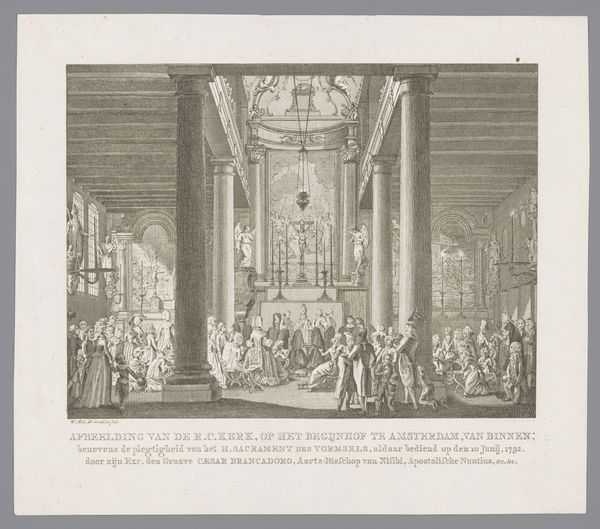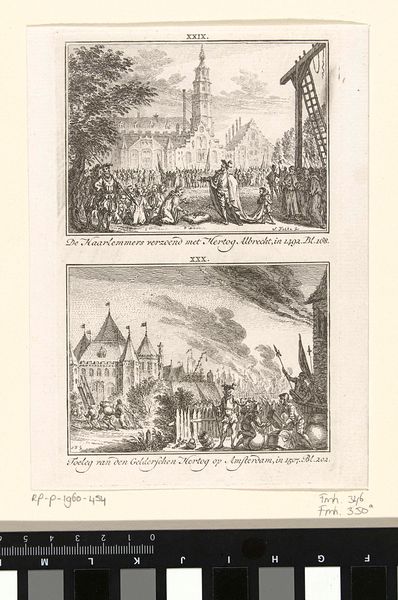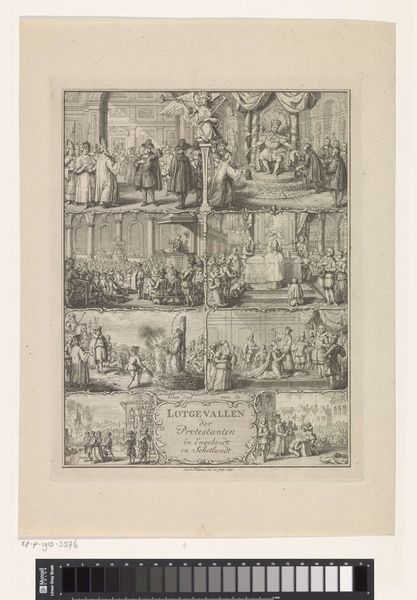
Paleis Honselaarsdijk wisselt van eigenaar / Verkoop van de Pruisische heerlijkheden aan Anna van Hannover, 1754 1754
0:00
0:00
print, engraving
#
baroque
# print
#
old engraving style
#
cityscape
#
history-painting
#
engraving
Dimensions: height 166 mm, width 106 mm
Copyright: Rijks Museum: Open Domain
Curator: Let's take a look at this intriguing 1754 engraving by Simon Fokke, held here at the Rijksmuseum. The work, titled "Paleis Honselaarsdijk wisselt van eigenaar / Verkoop van de Pruisische heerlijkheden aan Anna van Hannover, 1754", presents two distinct scenes. Editor: My first impression? It feels very contained, doesn't it? Like two little worlds stacked one atop the other. The top is a festive exterior, all hustle and bustle; below, an interior of hushed transaction. There’s a curious dissonance in scale as well – feels a bit like dollhouse vignettes. Curator: Exactly. The upper scene depicts the Palace Honselaarsdijk and celebrates Anna van Hannover taking possession. Consider the history: Anna, daughter of King George II of Great Britain, acquired these Prussian estates in 1754. This print commemorates the transfer of power and ownership within a complex web of European aristocracy. Editor: I love that the bottom scene gives us an almost voyeuristic peek into the signing of the agreement. These stiff, powdered men, sealing deals over what looks like a ridiculously ornate table. What are they thinking? Are they even aware of all that frolicking joy happening just a floor above? It’s almost humorous in its formality. Curator: It speaks to the nature of power. This engraving isn't just documenting an event, but performing one. By portraying both the joyous reception and the legal transfer, Fokke underlines how such transactions were legitimized through public performance and documentation, solidifying class divisions through spatial representation. Editor: The starkness of the engraving amplifies that, right? It strips away any chance of softening the imagery, leaving you with raw emotion. The joy feels amplified; so too, the almost clandestine dealing in the room below. Is it that raw, though? I almost feel a performative theatricality, or something of an affected sentimentality. I’m curious about what the target viewership was, if any sentimentality was meant. Curator: A great point. This print served as both a historical record and a piece of political communication. These images served to disseminate that shift to a wider audience and further engrain it in the political consciousness. Editor: Well, I feel as though my political consciousness has had a little jog! It's really rather special, I must admit, that Fokke captures both public and private displays, creating a more comprehensive visual archive. Curator: I concur. It reminds us to analyze the full context of a work in the present by considering a society's multiple social scales during the art work’s creation.
Comments
No comments
Be the first to comment and join the conversation on the ultimate creative platform.
